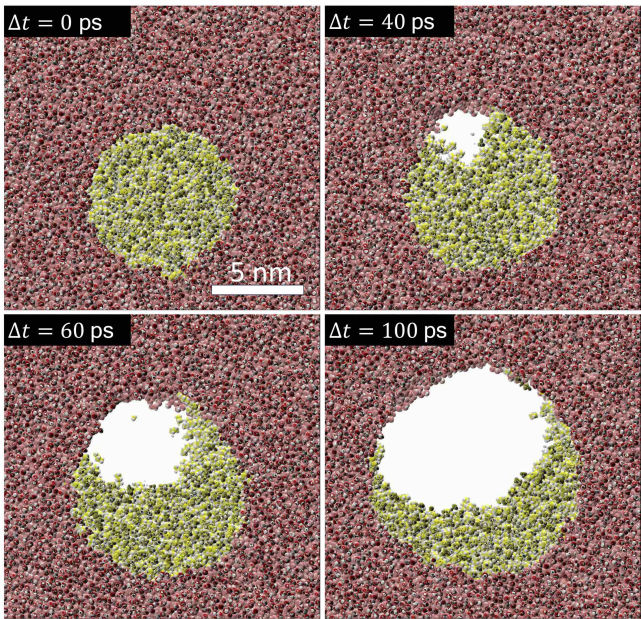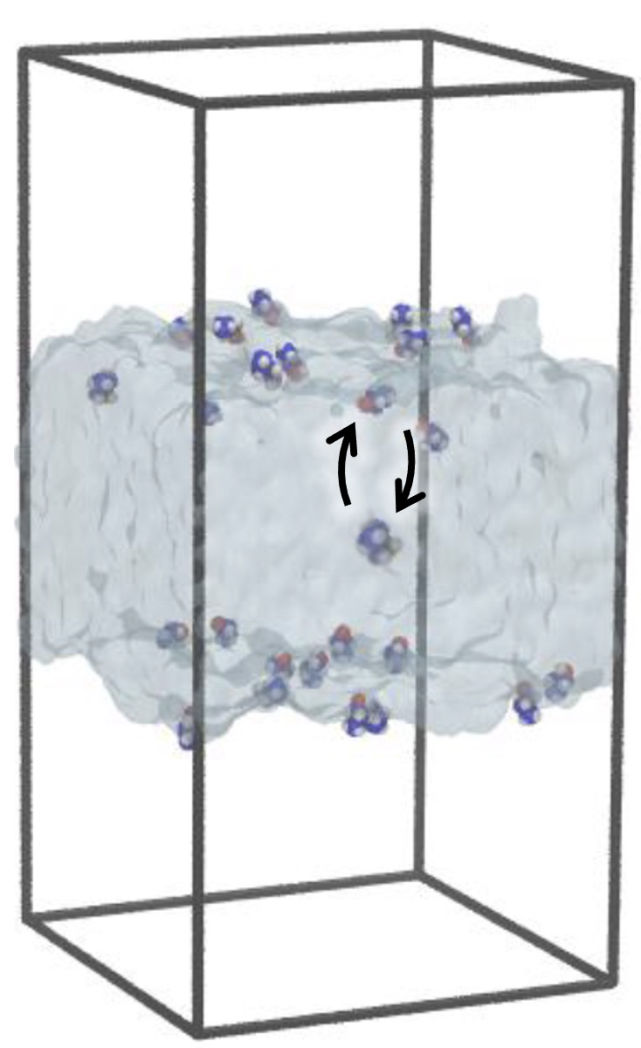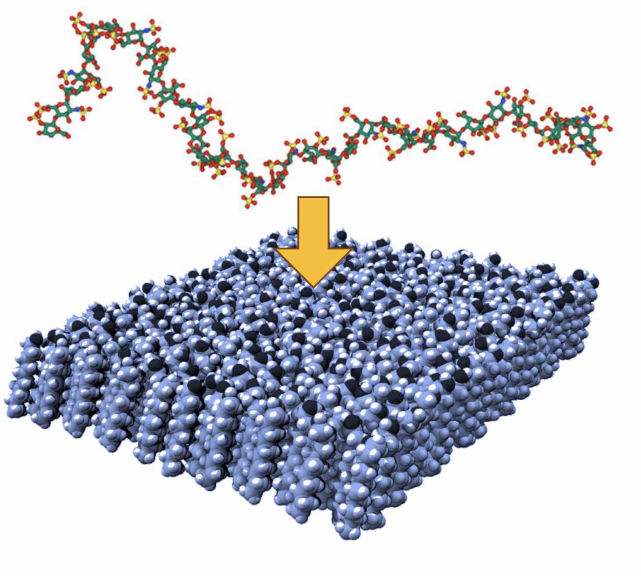
Tematika 1: Kavitacija
Kavitacija je pojav nastanka in rasti mehurčkov v tekočini, do katerega pride pri dovolj nizkem tlaku. Pomembna je v inženirstvu (npr. erozija ladijskih vijakov), biomedicini (ciljno sproščanje zdravil z ultrazvokom) in naravnih sistemih. Natančen mehanizem nastanka mehurčkov, še posebej v realnih sistemih z nečistočami in plini, ostaja slabo raziskan.
Motivacija: Natančen mehanizem nastanka kavitacije in vplivni dejavniki, vključno z vlogo nukleacijskih jeder, niso dobro raziskani. Še posebej slabo razumemo vpliv nepolarnih nečistoč in raztopljenih plinov.
Magistrsko delo bi obsegalo:
- Molekulske simulacije kavitacije tekočin pri različnih pogojih
- Proučitev vpliva nepolarnih agregatov v prisotnosti raztopljenih plinov
- Povezava simulacij s klasično teorijo nukleacije

